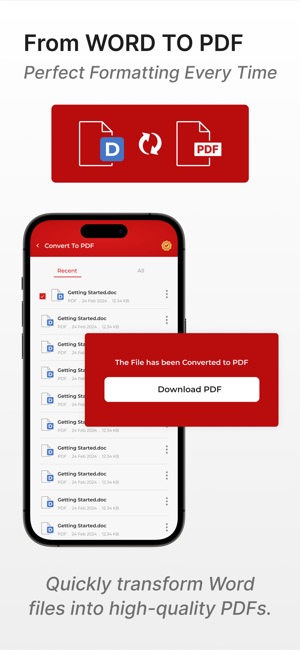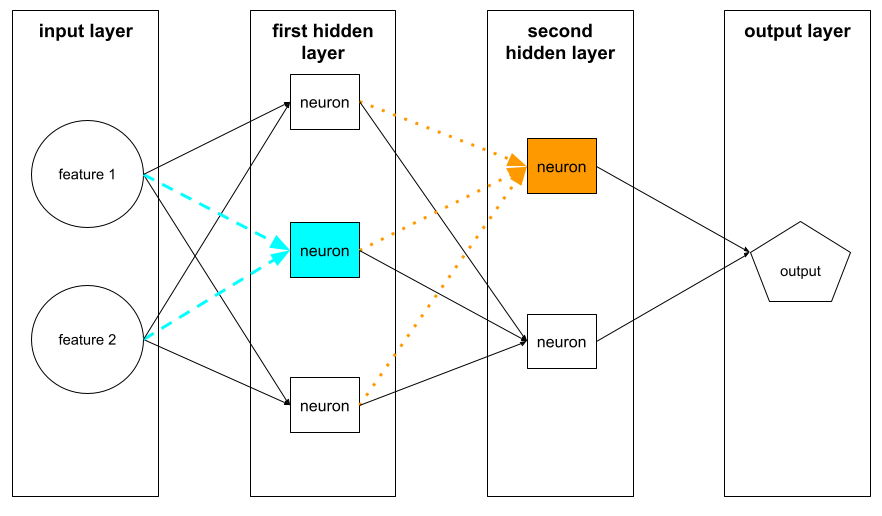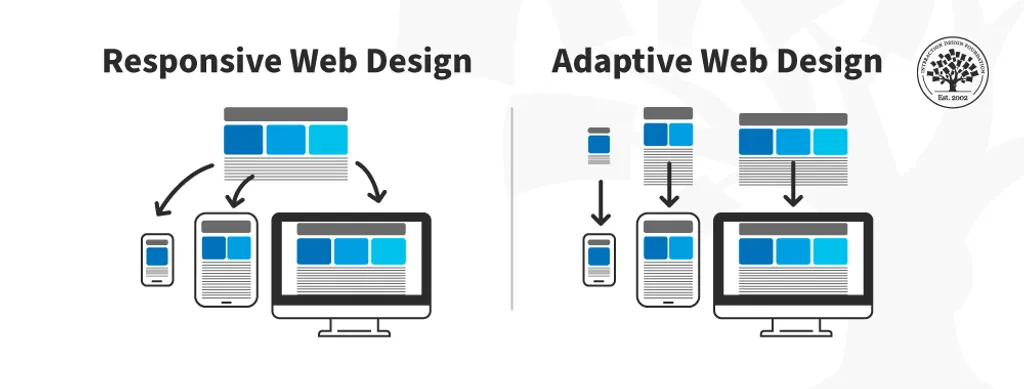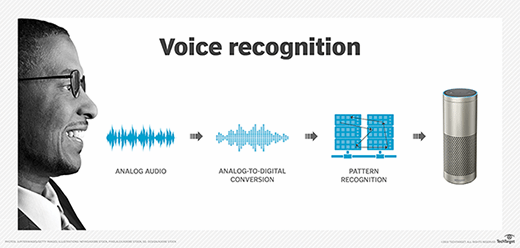Mobile-Friendly Document Conversion: Transforming Files On The Go with AI
Revolutionizing how professionals handle documents in the mobile era
In today's fast-paced professional world, the ability to transform and manipulate documents on mobile devices has become essential. As I navigate the challenges of remote and hybrid work environments, I've discovered that having flexible document conversion capabilities at my fingertips isn't just convenient—it's necessary for maintaining productivity while on the move.
Throughout this guide, I'll explore the cutting-edge technologies and methods that are making mobile document conversion more accessible and efficient than ever before. From transforming dense PDFs into engaging presentations to optimizing PowerPoint files for smaller screens, we'll cover the full spectrum of mobile document management solutions that are revolutionizing how we work with files on the go.

The Evolution of Mobile Document Management
When I look back at how we used to handle documents on mobile devices just a few years ago, the progress is remarkable. Initially, mobile devices were primarily consumption tools when it came to documents—viewing was possible, but meaningful editing and conversion were cumbersome at best.
The growing need for document flexibility has been driven by fundamental changes in how we work. According to recent workplace studies, over 70% of professionals now regularly need to access, edit, or convert documents while away from their primary workstations. This shift has created an urgent demand for more sophisticated mobile document solutions.
Mobile Document Usage Growth
The historical challenges of document conversion on mobile devices have been numerous:
- Limited processing power compared to desktop computers
- Restricted screen real estate for complex editing interfaces
- Battery consumption concerns with intensive conversion processes
- Connectivity requirements for cloud-based solutions
- Formatting inconsistencies between mobile and desktop versions
AI has emerged as the game-changer in this space. Modern AI-powered document conversion tools can now intelligently interpret document structure, extract key information, and reformat content appropriately for different output formats—all while requiring minimal input from the user. This is where I've found AI PDF to presentation conversion tools particularly valuable for transforming dense technical documents into engaging visual formats.
PageOn.ai has taken a particularly innovative approach by implementing conversation-based commands for document conversion. Rather than navigating complex menus or setting numerous parameters, I can simply tell PageOn.ai what I need in natural language: "Convert this annual report PDF to a presentation highlighting the key financial metrics." The system then intelligently processes the request, understanding both the conversion need and the specific content focus.
Essential Mobile-Friendly Conversion Technologies
When I examine the current landscape of mobile document conversion solutions, I see a diverse ecosystem of tools with varying capabilities. From dedicated mobile apps to cloud services accessible through browsers, professionals now have multiple pathways to transform documents while on the go.
flowchart TD
A[Document Conversion Need] --> B{Conversion Type?}
B -->|PDF to Presentation| C[AI-Powered Extraction]
B -->|Presentation to Mobile Format| D[Responsive Design Adaptation]
B -->|Doc to Visual Content| E[Content Restructuring]
C --> F[Cloud Processing]
C --> G[On-Device Processing]
D --> H[Format Optimization]
D --> I[Visual Enhancement]
E --> J[Hierarchical Organization]
E --> K[Visual Element Creation]
F & G & H & I & J & K --> L[Mobile-Ready Output]
style A fill:#FF8000,stroke:#FF8000,color:white
style B fill:#E35A5C,stroke:#E35A5C,color:white
style L fill:#7B68EE,stroke:#7B68EE,color:white
Cross-platform compatibility has become a critical consideration for modern professionals. In my experience, the most effective mobile conversion solutions need to work seamlessly across:
- iOS and Android mobile operating systems
- Web browsers for device-agnostic access
- Desktop environments for continuity between work contexts
- Various output formats (PDF, PPTX, DOCX, HTML, etc.)
When weighing cloud-based versus on-device conversion options, I've found there are distinct advantages to each approach:
| Aspect | Cloud-Based Conversion | On-Device Conversion |
|---|---|---|
| Processing Power | High (server resources) | Limited by device capabilities |
| Connectivity Requirement | Constant connection needed | Can work offline |
| Battery Impact | Lower (processing offloaded) | Higher (local processing) |
| Data Security | Depends on provider policies | Data stays on device |
| Feature Richness | Typically more comprehensive | Often more limited |
PageOn.ai's AI Blocks system has been particularly revolutionary in how it simplifies complex file transformations. Rather than requiring technical knowledge of file formats and conversion parameters, the system uses visual building blocks that represent different document components and transformation actions. In my experience, this approach makes document conversion more intuitive and accessible, especially on mobile devices where traditional interface complexity can be prohibitive.

Integration capabilities with existing mobile document ecosystems are another crucial factor. The most effective conversion tools I've used don't exist in isolation—they connect seamlessly with cloud storage providers (Google Drive, Dropbox, OneDrive), productivity suites (Microsoft 365, Google Workspace), and communication platforms (Slack, Teams) to create cohesive workflows that minimize friction when moving documents between different contexts and formats.
PDF to Presentation Conversions for Mobile Users
Converting PDFs to presentations on mobile devices presents unique challenges that I've encountered frequently. PDFs often contain dense information, complex layouts, and detailed visuals that need thoughtful restructuring to work well in presentation format—a task made more difficult on smaller screens.
The primary challenges I've identified include:
- Accurately identifying the hierarchical structure of content within PDFs
- Determining which content should be included vs. summarized
- Maintaining visual fidelity of charts, graphs, and images
- Creating a consistent visual theme across slides
- Managing the workflow efficiently on limited screen real estate
I've found that a structured workflow makes mobile PDF-to-presentation conversion much more manageable. Here's my step-by-step approach:
flowchart TD
A[Upload PDF to Conversion Tool] -->|Mobile Upload| B[Initial Content Analysis]
B --> C[AI Identifies Key Content]
C --> D[Content Categorization]
D --> E[Slide Structure Generation]
E --> F[Visual Theme Selection]
F --> G[Mobile Preview & Editing]
G -->|Refinement| G
G --> H[Final Conversion & Export]
style A fill:#FF8000,stroke:#FF8000,color:white
style C fill:#E35A5C,stroke:#E35A5C,color:white
style F fill:#7B68EE,stroke:#7B68EE,color:white
style H fill:#4CAF50,stroke:#4CAF50,color:white
PageOn.ai's Deep Search functionality has transformed how I extract and visualize key data points from PDFs. When I upload a technical report or research paper, the system can automatically:
- Identify and extract statistical data for visualization
- Recognize key concepts and organize them hierarchically
- Pull out quotes and highlight-worthy content
- Suggest visual representations for complex information
I've discovered that maintaining visual consistency across converted documents on different screen sizes requires careful attention to several factors:
Screen Size Impact on Presentation Elements
When dealing with complex tables and charts during mobile conversion, I've developed several best practices:
- Break down complex tables into multiple, simpler visualizations
- Convert data tables into more mobile-friendly chart formats where appropriate
- Use progressive disclosure for detailed information (expandable sections)
- Ensure text in charts is legible at mobile screen sizes
- Implement horizontal scrolling for tables that cannot be simplified further
For those looking to streamline the process, I've found that convert PDF to PPT apps can significantly reduce the time and effort required, especially when they leverage AI to intelligently structure content.
Optimizing PowerPoint and Presentation Files for Mobile Access
In my experience, even when presentations are created with desktop viewing in mind, they often need to be accessed and sometimes edited on mobile devices. Converting presentations to truly mobile-friendly formats requires attention to several key factors.

When converting presentations for mobile consumption, I follow these techniques to maintain functionality:
- Increase font sizes proportionally for better readability on small screens
- Simplify complex slide layouts to focus on core messages
- Convert multi-column content to single-column where appropriate
- Replace text-heavy slides with visual representations
- Use ppt to pdf converters for creating universally accessible versions when interactivity isn't essential
PageOn.ai's Vibe Creation feature has been particularly valuable in my workflow for adapting presentation aesthetics to smaller screens. This AI-powered tool can:
- Analyze existing presentation designs and create mobile-optimized versions
- Suggest color schemes with improved contrast for mobile viewing
- Resize and reposition visual elements for different screen dimensions
- Create consistent visual themes that work across device types
Mobile-Friendly Presentation Elements
Mobile-specific considerations for slide transitions and animations have been important in my conversion process:
- Simplify or remove processor-intensive transitions
- Replace complex animations with simpler alternatives
- Ensure transitions work smoothly on lower-powered devices
- Test playback performance on target mobile platforms
Collaborative editing of converted presentations on mobile devices presents its own challenges. I've found these strategies effective:
- Use cloud-based platforms that offer robust mobile editing capabilities
- Implement version control to prevent conflicts during collaborative work
- Utilize commenting and annotation tools designed for touch interfaces
- Consider convert tome ai presentations to powerpoint when working with teams that need native PowerPoint access
Reducing file size while maintaining visual quality is crucial for mobile presentations. My approach includes:
- Compressing images to appropriate resolutions for mobile viewing
- Removing unused master slides and templates
- Embedding only necessary fonts
- Using vector graphics where possible for scalability without increased file size
- Breaking very large presentations into smaller, linked modules
Google Docs to Presentation Workflows for Mobile Professionals
Converting text-heavy Google Docs into visually engaging presentations while working on mobile devices presents unique challenges and opportunities. I've developed workflows that leverage both native capabilities and specialized tools to make this process efficient.
Mobile-specific tools for transforming text documents into visual presentations have evolved significantly. The most effective ones I've used offer:
- Intelligent content parsing to identify structure
- Automatic slide creation based on document headings
- Smart extraction of key points from paragraphs
- Visual theme suggestions based on document content
- Integration with Google Doc to presentation AI systems for enhanced automation
flowchart TD
A[Google Doc Content] --> B[Document Structure Analysis]
B --> C[Heading & Subheading Identification]
B --> D[Key Point Extraction]
B --> E[Visual Content Recognition]
C & D & E --> F[Content Organization]
F --> G[Slide Template Selection]
G --> H[Content Placement]
H --> I[Visual Enhancement]
I --> J[Mobile Preview]
J --> K[Final Adjustments]
K --> L[Export to Presentation Format]
style A fill:#FF8000,stroke:#FF8000,color:white
style F fill:#E35A5C,stroke:#E35A5C,color:white
style L fill:#7B68EE,stroke:#7B68EE,color:white
Cloud synchronization has been essential in my workflow for seamless document conversion across devices. By keeping documents in cloud storage, I can:
- Start a conversion process on my desktop and continue on mobile
- Share in-progress conversions with team members
- Access the latest version of both source documents and presentations
- Maintain consistent formatting across device types
PageOn.ai has revolutionized how I transform unstructured Google Doc content into structured visual hierarchies. The system analyzes document structure and content to:
- Identify logical breaks for slide transitions
- Create visual hierarchies that reflect document organization
- Transform bullet points into engaging visual elements
- Convert tables and data into charts and infographics
- Suggest visual metaphors that reinforce key concepts

Maintaining formatting consistency during mobile document transformations requires attention to several factors:
- Consistent font usage across platforms
- Color palette preservation
- Spacing and margin adjustments for different screen sizes
- Image resolution optimization without quality loss
- Consistent application of styles and themes
For collaborative mobile document conversion projects, I've found these best practices essential:
- Establish clear roles and responsibilities for team members
- Use cloud-based collaboration tools with robust mobile interfaces
- Create style guides to ensure consistency across contributors
- Implement approval workflows appropriate for mobile review
- Schedule synchronous collaboration sessions for complex decisions
Advanced Mobile Conversion Features and Techniques
As I've become more proficient with mobile document conversion, I've discovered advanced features that significantly enhance productivity and results. These capabilities transform what was once a cumbersome process into a streamlined workflow.
Batch conversion capabilities have been game-changing for my mobile workflow when dealing with multiple documents. Advanced mobile conversion tools now offer:
- Queue-based processing of multiple files
- Consistent styling across batched conversions
- Background processing while using other apps
- Batch export to multiple formats simultaneously
- Notification upon completion of lengthy batch processes
Offline conversion options have proven essential when working with limited connectivity. The most effective approaches I've used include:
- Downloading conversion engines for local processing
- Pre-caching templates and assets for offline use
- Queuing conversions for processing when connectivity returns
- Implementing progressive enhancement for varying connectivity levels
Document Conversion Security Considerations
PageOn.ai's agentic capabilities have transformed how I approach repetitive conversion tasks. The system can:
- Learn from my previous conversion preferences
- Suggest optimizations based on document content
- Automate routine formatting and styling decisions
- Pre-process documents to identify potential conversion challenges
- Apply content-specific conversion rules without manual intervention
Security considerations are paramount when converting documents on mobile devices. My essential practices include:
- Using tools with end-to-end encryption for sensitive documents
- Verifying data retention policies of cloud-based conversion services
- Implementing biometric authentication for accessing conversion tools
- Regularly clearing cached documents after conversion
- Using enterprise-grade solutions for business-critical content
Voice command integration has become an invaluable feature for hands-free document transformation workflows. Modern systems allow me to:
- Initiate conversion processes through voice commands
- Specify conversion parameters verbally
- Navigate through multi-step workflows using voice
- Dictate annotations and comments during review
- Control presentation playback hands-free

Future Trends in Mobile Document Conversion
As I look toward the horizon of mobile document conversion, several emerging AI technologies are poised to fundamentally transform how we work with documents on mobile devices.
The most significant emerging technologies include:
- Multimodal AI that can understand both textual and visual content simultaneously
- Context-aware document transformation that adapts to user intent and audience needs
- Generative AI that can create supplementary visual content based on document text
- Advanced natural language processing for more intuitive command interfaces
- Real-time collaborative document transformation with AI assistance
flowchart TD
A[Current Mobile Document Conversion] --> B[Near Future: 1-2 Years]
B --> C[Mid Future: 3-5 Years]
C --> D[Long Future: 5+ Years]
B --> B1[Enhanced Multimodal Understanding]
B --> B2[Improved Voice Command Integration]
B --> B3[Better Cross-Platform Consistency]
C --> C1[Context-Aware Transformations]
C --> C2[Personalized Document Intelligence]
C --> C3[Advanced Collaborative Capabilities]
D --> D1[AR/VR Document Visualization]
D --> D2[Thought-Based Document Control]
D --> D3[Autonomous Document Agents]
style A fill:#FF8000,stroke:#FF8000,color:white
style B fill:#E35A5C,stroke:#E35A5C,color:white
style C fill:#7B68EE,stroke:#7B68EE,color:white
style D fill:#4CAF50,stroke:#4CAF50,color:white
My predictions for cross-platform document interoperability include:
- Universal document format standards that maintain fidelity across platforms
- AI-powered format translation that preserves both content and functionality
- Cloud-based document states that can be rendered appropriately on any device
- Seamless handoff between mobile and desktop document experiences
- Platform-agnostic collaboration with consistent user experiences
PageOn.ai's continuous innovation addresses evolving mobile document needs through:
- Regular model updates to improve content understanding
- New visualization capabilities for different document types
- Enhanced mobile interface optimizations
- Expanded integration with popular mobile productivity ecosystems
- Adaptive learning from user conversion patterns to improve suggestions
The integration of AR/VR with document conversion opens exciting possibilities for enhanced mobile visualization:
- 3D visualization of complex data from 2D documents
- Spatial arrangement of document components in virtual space
- Immersive presentation experiences from converted documents
- Gesture-based document manipulation and transformation
- Collaborative virtual environments for document work

To prepare for the next generation of mobile document management solutions, I recommend:
- Adopting cloud-first document strategies that emphasize accessibility
- Investing in training on AI-assisted document workflows
- Establishing clear document governance policies that accommodate mobile work
- Experimenting with emerging technologies to identify valuable use cases
- Focusing on content structure rather than specific formats to ensure future flexibility
Transform Your Document Workflow with PageOn.ai
Experience the power of AI-driven document conversion that works seamlessly across all your devices. Convert, transform, and visualize your content with intuitive, conversation-based commands.
Start Creating with PageOn.ai TodayEmbracing the Mobile Document Revolution
As I reflect on the current state and future direction of mobile document conversion, it's clear that we're in the midst of a transformation that's fundamentally changing how professionals work with information. The ability to seamlessly convert, adapt, and visualize documents across devices is no longer a luxury—it's an essential capability for the modern workforce.
PageOn.ai stands at the forefront of this revolution, offering intuitive, AI-powered solutions that address the unique challenges of mobile document conversion. By combining natural language processing, intelligent document understanding, and adaptive visualization capabilities, PageOn.ai makes it possible to transform complex documents into engaging visual formats regardless of where you're working or what device you're using.
The future of mobile document conversion will be defined by greater intelligence, seamless cross-platform experiences, and increasingly intuitive interfaces. By embracing these emerging technologies and approaches now, we can build more efficient, flexible, and powerful document workflows that adapt to our needs rather than forcing us to adapt to their limitations.
You Might Also Like
The Psychology Behind Artificial Scarcity: Designer Toys and Consumer Behavior
Explore the economics of artificial scarcity in designer toy markets, from psychological drivers and market dynamics to ethical considerations and future trends in collectible industries.
Visualizing Greek Debt Crisis Warning Signs: Essential Lessons for Economic Stability
Discover how visual data analysis could have predicted the Greek debt crisis through GDP patterns, growth trajectories, and economic indicators. Learn key warning signs for future crisis prevention.
Pop Mart's Global Expansion: Crafting a Collectible Empire Through Strategic Visualization
Explore Pop Mart's international toy market strategy, from IP-driven business models to visual storytelling. Learn how this collectible empire achieved 375% overseas revenue growth across 100 countries.
Empathy as a Visual Superpower: Transform Your Digital Professional Relationships
Discover how to develop empathy as a professional superpower in the digital age. Learn practical visualization techniques to enhance emotional intelligence and transform workplace relationships.
